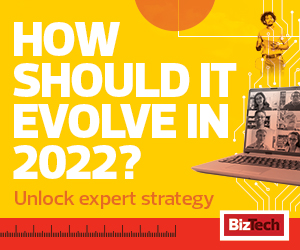The enhanced scalability and cost control are only a part of the appeal. The competitive advantage offered by artificial intelligence accessible through cloud providers has also become a prime motivator.
Chatbots are already a staple of many financial institutions’ customer service strategies, but many other applications are ready for adoption. AI technology could analyze transactions, learn how to identify suspicious accounts or anomalies and fraud, process large volumes of transactions and more.
Banks investing in the technology on their own would be costly. But cloud service providers that offer AI as an add-on present an alluring opportunity for financial services to continue evolving.
2. Banks Will Seek to Automate More Tasks
Robotic process automation has seen an uptick in parallel with financial services’ growing implementation of AI.
The industry isn’t short on the type of simple tasks that RPA is made for. Customer information verification, cash management, financial statement reporting and more are well suited for the technology, which can reduce costs up to 75 percent, according to KPMG.
By further implementing automation in 2022, financial services will gain more than reduced costs and more efficient processes. Relieved of routine tasks, skilled employees will be able to focus their efforts on more complex work, allowing institutions to consider how to evolve their services further once the basic tasks are taken care of.
3. Remote Banking Experiments Will Increase
Before COVID-19, financial services had been experimenting with remote banking. But 2020 turned much of that experimentation into proof-of-concept deployments, and that’s not likely to subside once the pandemic ends.
More than 75 percent of U.S. banking customers made their most recent banking transaction online, and 40 percent of younger bank customers told Cornerstone Advisors that they visit bank branches only because of poor experiences with their banks’ digital options — hardly a ringing endorsement of in-person banking.
In short, customers’ expectations and preferences have changed, and that will see banks continue to experiment with remote services.
ATMs will continue to evolve, offering additional services such as transfers or loan payments. Video banking, especially, is expected to be a point of focus. Mortgage applications and investment consultation, for example, can easily move to videoconferencing.













